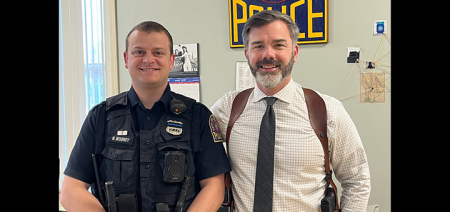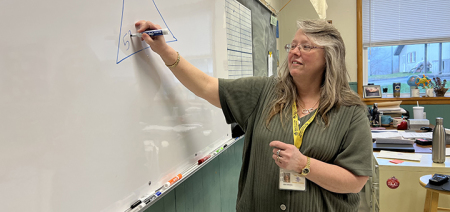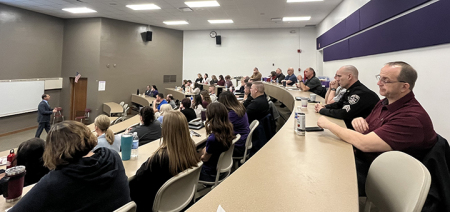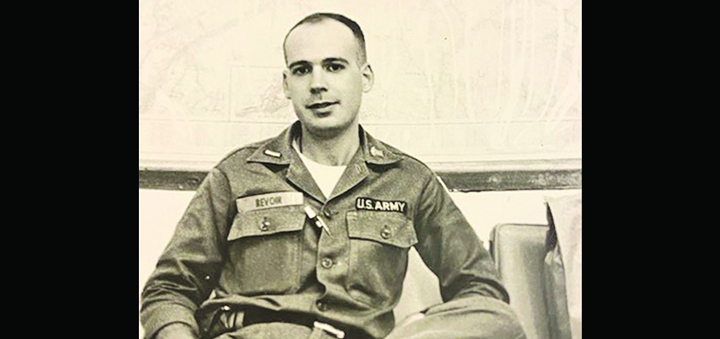Y Giants 7: Coaches And Players Change For 1949
Published:
October 23rd, 2007
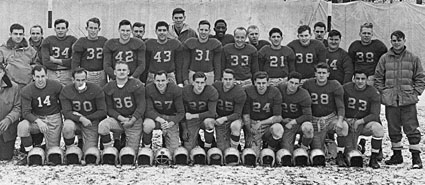
By Jim Dunne
The success of the Norwich Y Giants semi-pro football team during the first two seasons made it imperative that the program continue into 1949. The success was due to the winning record of the team and the quality of their play, but it was also a result of the excellent business management of the Board of Control, and especially Stan Georgia. Several semi-pro teams in other cities folded or had interruptions in their existence because of poor management. Some teams were managed by the players themselves, and this led to insufficient attention being directed to business matters, or the players were too anxious to receive compensation for their services. At the end of the 1948 season, Georgia issued a detailed financial report which accounted for every dollar, and revealed a total budget of almost $8,000, a substantial sum in that year. Contracts were signed by visiting teams, and they were paid an agreed-upon fee for playing, but whatever the Giants organization took in at the gate and in memberships (i.e. season tickets) above that amount was theirs to keep and use. Because Norwich had the Sun, and the Sun had Perry Browne, financial support from the fans was outstanding. Browne published an article, or included a paragraph in his column Sport Slants, about the Y Giants every day during the football season (3 months), and printed a list of everyone who bought a membership.
Stan Georgia’s report following the 1948 season revealed, among other things, that the team spent $2,433 for uniforms and equipment, and $1,065 for jackets for the players. The jackets were the only compensation that the players received. After all bills were paid, the Giants’ account contained $165.
The first meeting for the 1949 season was held on July 11 at the home of John Kelly, with Coach Jack Lee presiding. Before the first game, however, Lee had become involved in the restaurant business, first in Sidney and then in New Berlin, and had realized that he would not be able to devote adequate time to coaching. According to John Kelly and Harold Barnes, he had been a good coach, bringing a great deal of football knowledge to the job, demanding excellence, holding the respect and admiration of the players, and setting an example on the field. Because the season was about to start, the Board of Control acted quickly to appoint Bob “Percy” Crittenden as coach, a decision that was received with approval by the players. Crittenden had been an outstanding quarterback for both NHS and the Giants, excelling particularly in intelligence and understanding of the game, and he was destined to continue the winning tradition established by Jack Lee. Crittenden asked Bob Ryan, an NHS and Ithaca College grad who had coached at South New Berlin, to assist him.
Other changes for 1949 were, on the administrative side, the addition of Nelson Benedict, well-known sportsman, to the Board of Control, along with player representatives John Kelly and Harold Barnes, and Coach Crittenden ex officio. On the field, the retirement of guards Bill Currie and Andy McMullen, and tackles Fran Spadaro, Neap Tracy, and Jack Lee, would no doubt leave a void in the line that would be difficult to fill. On the other hand, the arrival of several newcomers to the squad promised to add youth and bulk to the battle in the trenches. At center, MVP Diz Conron, always a rock on defense, would be understudied by Fred Mirabito, 1941 NHS grad who had spent 3 years in the Army and 4 years at Syracuse, where he had played football and just graduated. At guard, recent NHS graduates Mike Rotundo and Fay Cosens, along with returning Sam DiNoto and Don Barnes, gave some depth to the position. Rotundo, the outstanding lineman on the 1948 NHS team and younger brother of 1937 star Jim Rotundo, showed particular promise. The tackle slots had several returning veterans in Dick VanDeusen, Nick Sylstra, Plumb Palmer, and Ray Lowe (a friend of VanDeusen’s at Muhlenburg). At end, regulars Don McGraw and Babe Barnes were joined by Dick Storrer and newcomer George Echentile. In the backfield, Crittenden had hopes that he could be relieved at quarterback by veteran Harry Thompson and former NHS captain John Ebovicz, so that he could devote his time to coaching. Running backs Richie Barnes and John Blood would be joined by Guilford product Buddy Seaman, a small but speedy and deceptive runner who showed great promise, his brother Bob Seaman, and Ray Clark. At fullback, the interchangeable Kelly brothers were again ready to blast holes in the line. Late additions were Ed Weed and Karl Winter, a big tackle from New Jersey. Of uncertain status were Burt Palmatier and Bill Crawley.
At a meeting of the Board of Control, membership chairman Hartley Ackley persuaded the Board to approve a season membership price of $6, entitling the member to admission to all 7 home games, or “one free game.” The Board also adopted a rule that players on college teams could not play for the Giants. Misunderstood at first, the rule did not mean that college men couldn’t play, but only those who were members of a college squad. Colleges did not permit their players to play for outside teams, and the Giants did not want to be in a position of facilitating violation of that rule.
The first game, on September 18, 1949, was at home against the Chenango Valley All-stars, a team based in Oxford which included players from Greene and Sherburne, as well as two former Norwich HS stars, Fred Johnson and Harvey Boyer. Other starters for the CV team were Ed Winner, Mike Race, Carl Winner, Art Marks, John Biviano, Bob Davis, Al Ross, and Bob Frazier. The Y Giants had a good month of almost daily practices behind them, and they were ready for some serious scrimmage, as they blew out the men from the rest of the Valley, 34–0. John Ebovicz started at quarterback, and he acquitted himself well, completing fourth-down passes to both Don McGraw and Babe Barnes. Running stars for the Giants were Burt Palmatier (now 30 years old), Richie Barnes, and Ray Clark. Jim and John Kelly excelled on defense, along with Nick Sylstra, Mike Rotundo, Sam DiNoto, and Bob Conron. An interesting tactic used by the All-stars was choosing to kick off rather than receive after two Norwich scores in the second half, the idea being that they could apply a stop, either with a fumble recovery, interception, or blocked punt, and take over deep in Norwich’s territory. The result, however, was that Oxford did not even get their hands on the ball until well into the 4th quarter.
The following Sunday, the Y Giants entertained the North Utica team, which they had measured twice in the previous year by identical 14–0 scores. The Utes were led by Ron Barr, who was known by some Norwich fans as a pitcher for the Bluejays, the Norwich semi-pro baseball team, during the summer. Norwich had revealed only a small part of their offensive wares during the victory of the first week, and went into the game at full strength except for a minor injury to Jim Kelly, which only resulted in his brother John starting at fullback – not exactly a deficit! In fact, starting with this game, a plethora of great running backs gave Norwich an advantage that few teams could contain. In addition to veterans Burt Palmatier, Richie Barnes, John Blood, Harry Thompson, and the Kellys, added strength and depth came from newcomers John Ebovicz, Ray Clark, Don Crittenden (one game later), and especially the great John “Buddy” Seaman. Norwich dismissed the Uticans 27–0. Touchdowns were scored by Richie Barnes, Dick Storrer, Harold Barnes and Ray Clark, and other offensive stars were Don McGraw, George Echentile, and Fred Mirabito. Defensively, Mike Rotundo, Bob Conron, Sam DiNoto, Nick Sylstra, Don Barnes, and Ed Weed were stand-outs for the Giants.
The “boys from Guilford,” Nick Sylstra, Bob, Dave, and Buddy Seaman, came to the Giants after the Sidney Cardinals club folded. Bud Seaman was in the Air Force, and drove from Vermont every weekend to play for the Giants. He was short of stature, but a spectacular runner, and for 1949 and 1950, he gave the Norwich team another dimension in terms of offense.
Part 8 of this 15-part series will appear in Wednesday’s Evening Sun.
Comments
